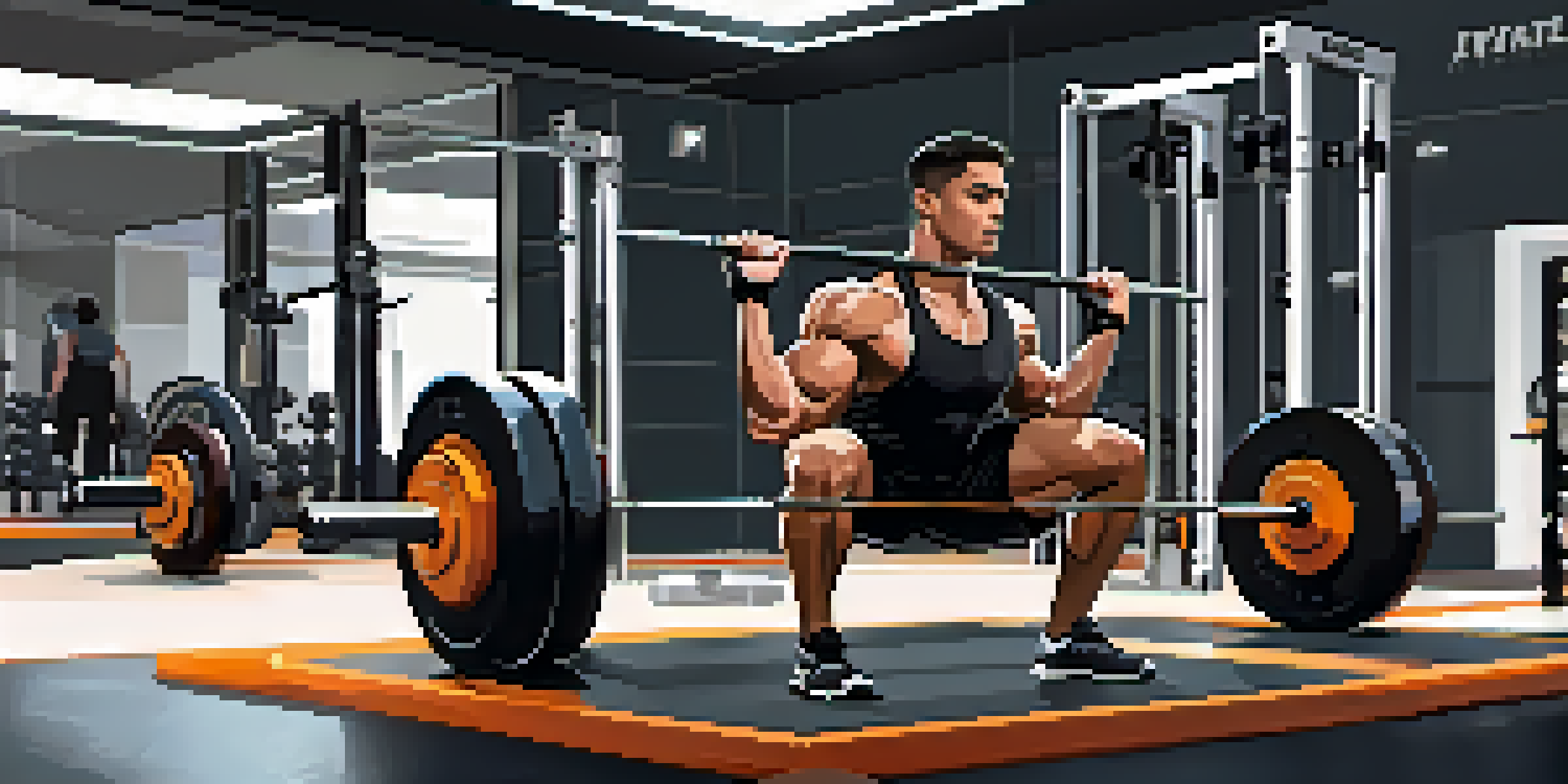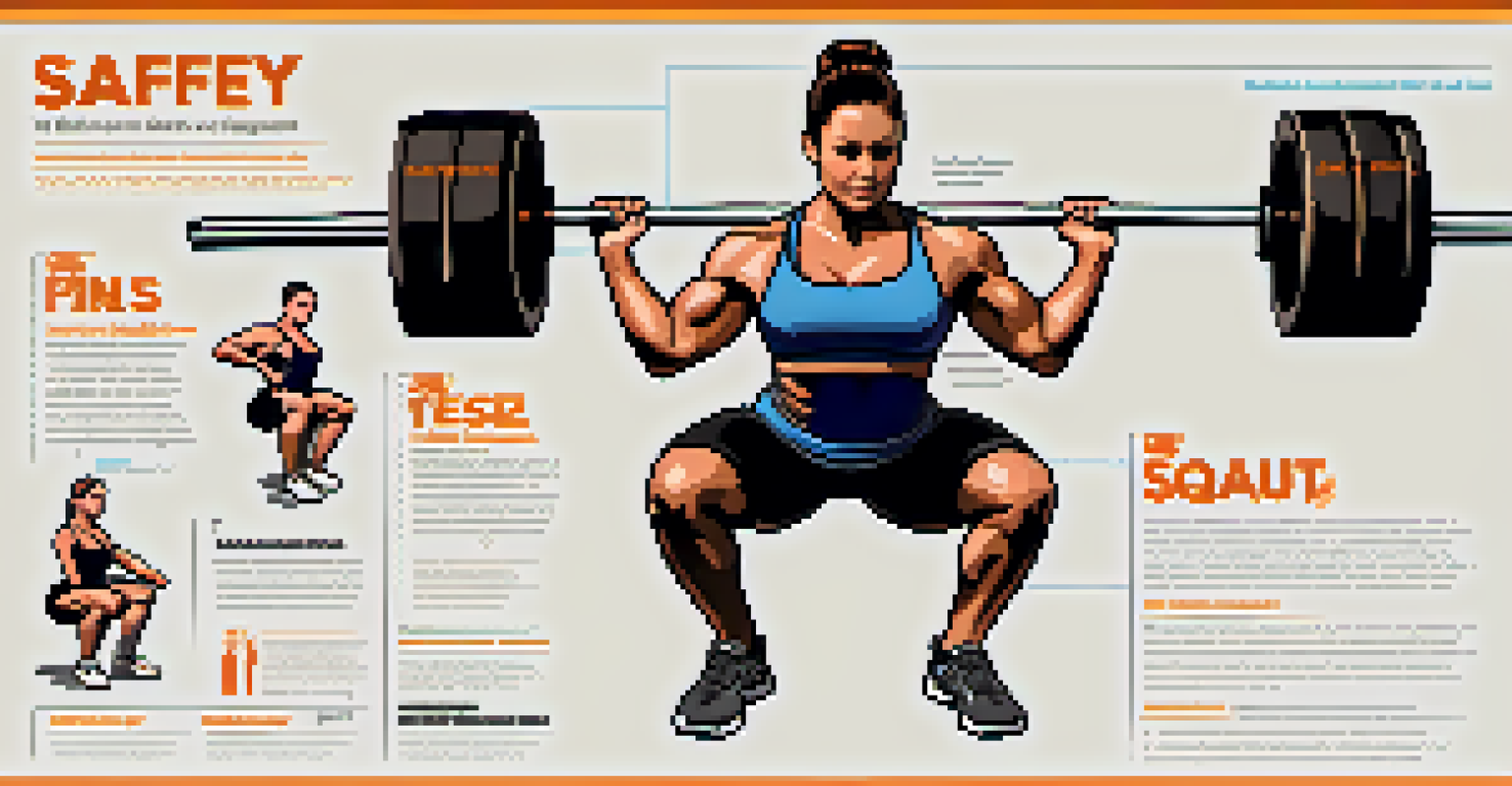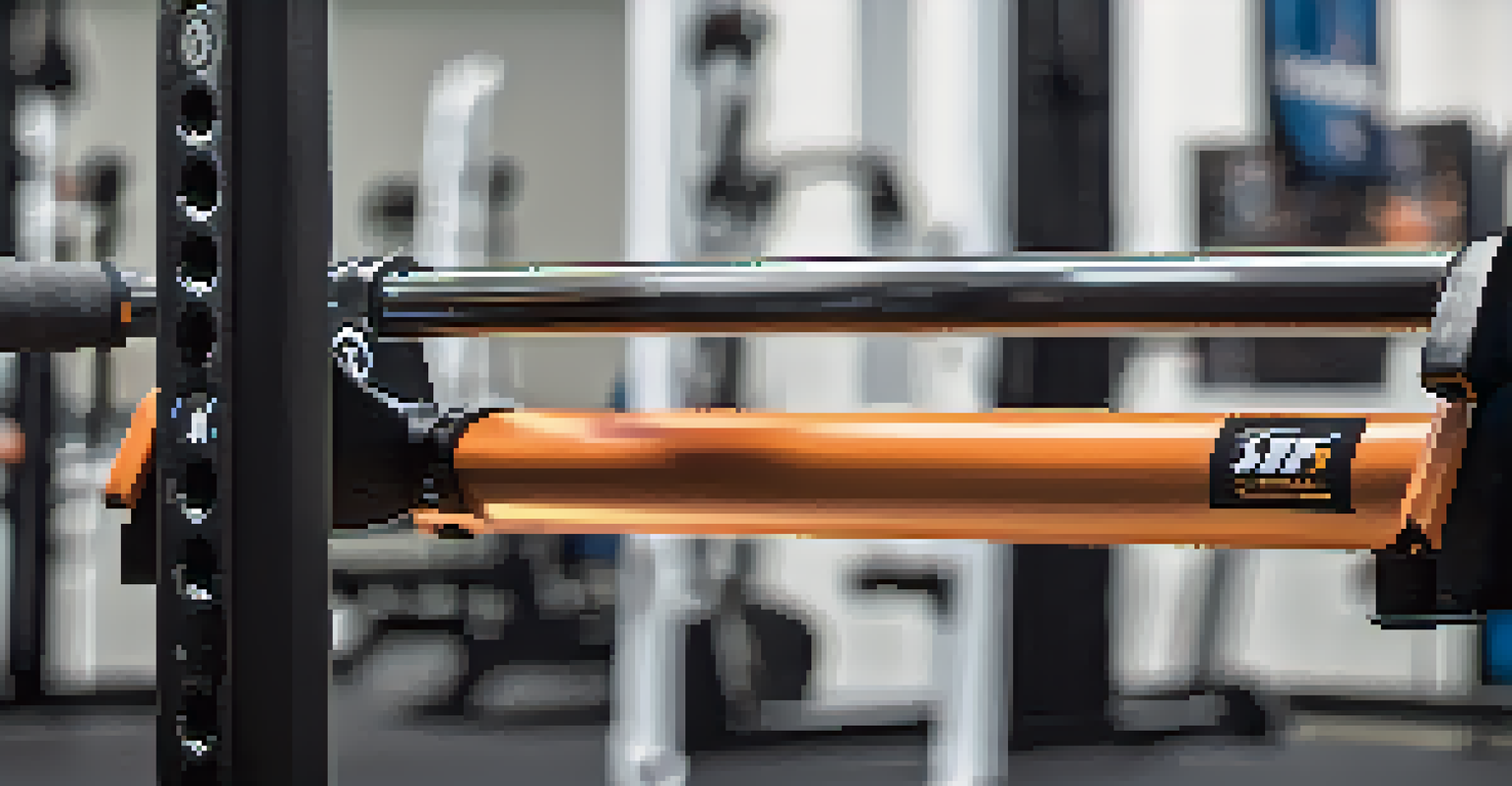Safety Bar Squats: Reducing Shoulder Strain While Lifting

Understanding Safety Bar Squats and Their Benefits
Safety bar squats are a variation of traditional squats that utilize a specially designed barbell. This bar features padded arms that rest on your shoulders, allowing for a more comfortable grip compared to a standard barbell. Many lifters find that this design helps reduce stress on the shoulders and wrists, making it an excellent choice for those with mobility issues or injuries.
Strength does not come from physical capacity. It comes from an indomitable will.
One of the primary benefits of the safety bar is its ability to promote a more upright posture during the squat. This can lead to improved form and reduced risk of injury, particularly for those who struggle with flexibility or technique. Additionally, since the weight is distributed differently, lifters often find they can lift heavier weights without compromising their safety.
Incorporating safety bar squats into your routine can also enhance your overall strength training. By targeting the quads, glutes, and hamstrings effectively, these squats can complement other exercises and contribute to balanced muscle development. This makes them a valuable addition to any lifter's arsenal, regardless of their experience level.
Why Shoulder Strain Matters in Weightlifting
Shoulder strain is a common issue for many lifters, often resulting from improper technique or overexertion. This discomfort can deter individuals from pursuing their fitness goals and can lead to more serious injuries down the line. Understanding how shoulder strain occurs is crucial for anyone looking to lift safely and effectively.

When performing traditional squats, the barbell rests on the upper back, which can create undue pressure on the shoulders. For those with limited shoulder mobility or pre-existing conditions, this pressure can lead to pain and discomfort, making it challenging to complete a workout. Recognizing these risks can help lifters make informed choices about their training methods.
Safety Bar Squats Reduce Strain
Safety bar squats help minimize shoulder strain, making them an ideal choice for lifters with mobility issues.
Using equipment like the safety bar can significantly reduce this strain, allowing individuals to focus on their strength gains. By minimizing shoulder involvement, lifters can push themselves without the fear of injury, resulting in a more enjoyable and productive workout experience. Ultimately, prioritizing shoulder health is essential for long-term success in weightlifting.
How to Properly Use a Safety Bar for Squats
To get started with safety bar squats, it's important to set up your equipment correctly. Begin by placing the safety bar on the squat rack at about chest height, ensuring it's secure before stepping under it. Once you’re positioned, grasp the handles and step back, allowing the bar to rest comfortably on your shoulders.
The difference between a successful person and others is not a lack of strength, not a lack of knowledge, but rather a lack in will.
When you're ready to squat, focus on maintaining a straight back and engaged core as you lower into the squat. The safety bar allows for a more natural movement pattern, so don't hesitate to explore your comfort zone while ensuring proper form. As you rise back up, push through your heels and keep your chest lifted to maximize the effectiveness of the exercise.
It's vital to start with lighter weights to master your technique before progressing to heavier loads. This gradual approach allows you to build confidence and strength while minimizing the risk of injury. Remember, the goal is not just to lift heavier but to do so safely and efficiently.
Common Mistakes to Avoid with Safety Bar Squats
Even with the advantages of safety bar squats, mistakes can still happen. One common error is allowing the knees to cave in during the squat, which can lead to instability and potential injury. Keeping your knees aligned with your toes is crucial to maintaining proper form and ensuring a safe lift.
Another mistake is not engaging the core throughout the movement. A strong core is essential for supporting your spine and maintaining balance, especially when lifting heavier weights. Failing to engage your core can lead to leaning forward or losing control, which increases the risk of injury.
Enhances Strength and Posture
This squat variation promotes better posture and allows lifters to target key muscle groups effectively.
Lastly, don’t rush through your repetitions. Taking your time allows you to focus on your form and technique, which is particularly important for maximizing the benefits of safety bar squats. Quality over quantity should always be your mantra when it comes to lifting.
Integrating Safety Bar Squats into Your Workout Routine
To make the most of safety bar squats, consider where they fit into your overall workout routine. They can serve as a primary leg exercise or be included as part of a full-body workout. By scheduling them strategically, you can ensure balanced muscle development and prevent overtraining.
Pairing safety bar squats with complementary exercises, such as deadlifts or lunges, can enhance your overall strength and stability. This combination not only targets the major muscle groups but also builds functional strength that translates into everyday activities. Mixing things up keeps your workouts fresh and challenging.
Always listen to your body and adjust your routine based on how you're feeling. If you experience discomfort or fatigue, it may be wise to modify your approach or consult a fitness professional. The ultimate goal is to enhance your strength while minimizing the risk of injury.
The Role of Recovery in Strength Training
Recovery is an often-overlooked aspect of strength training that plays a significant role in performance and injury prevention. After a workout, your muscles need time to repair and grow stronger, which is why incorporating rest days is essential. Ignoring recovery can lead to overuse injuries and impede your progress.
While safety bar squats can reduce shoulder strain, they still place stress on the legs and lower back. Ensuring you allow your body ample recovery time will help you bounce back stronger and ready for your next workout. This includes getting adequate sleep, staying hydrated, and fueling your body with nutritious foods.
Recovery Is Key to Progress
Incorporating adequate recovery practices is essential for muscle repair and overall strength training success.
In addition to rest, consider integrating mobility work and stretching into your routine. These practices can enhance flexibility and help prevent injuries by keeping your muscles and joints in optimal condition. Prioritizing recovery will not only improve your performance but also enhance your overall lifting experience.
Final Thoughts on Safety Bar Squats for Lifters
In conclusion, safety bar squats offer a fantastic alternative for those looking to minimize shoulder strain while maximizing their lifting potential. By understanding the benefits and proper techniques associated with this exercise, you can incorporate it into your routine effectively. These squats not only enhance your strength training but also promote better posture and form.
Whether you're a beginner or an experienced lifter, it's important to prioritize safety and comfort in your workouts. Utilizing the safety bar can help you achieve your fitness goals with confidence while reducing the risk of injury. Remember, lifting should be an empowering experience, not one filled with pain or discomfort.

As you explore the world of strength training, keep experimenting with different techniques and tools to find what works best for you. Embrace the journey, stay informed, and enjoy the process of becoming a stronger, healthier version of yourself.